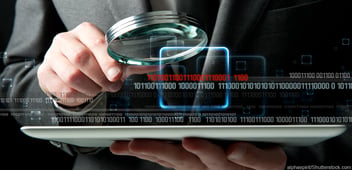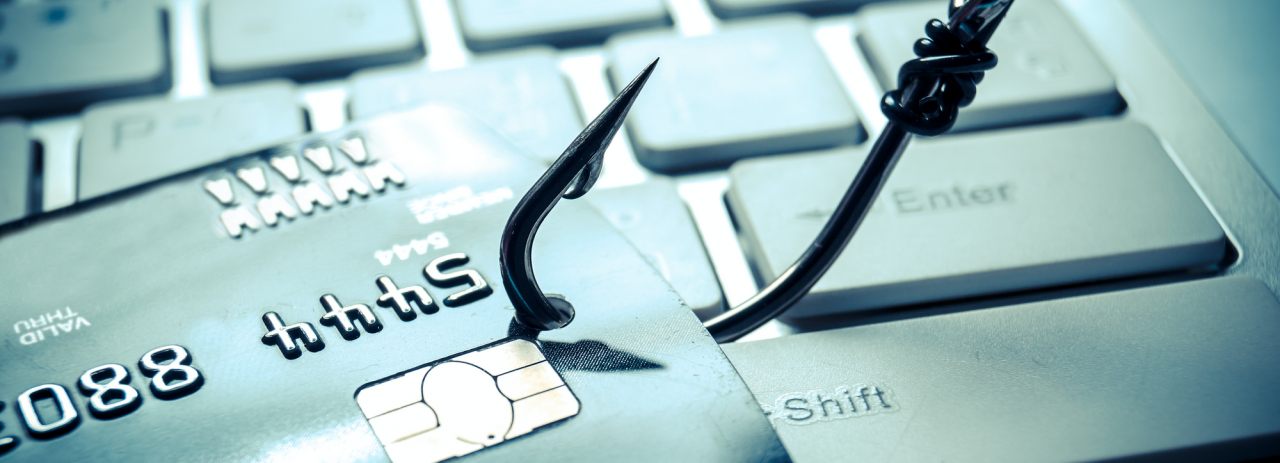By: Sarah Goltz, Content Manager on May 25th, 2022
What is a Phishing Attack? (5 Ways to Avoid Them)
As a business, it is essential to stay up to date on all the latest tactics used by hackers to gain access to confidential information. As a managed IT provider, we work with many businesses to help their employees understand and avoid phishing attacks.
This allows businesses to have a proactive defense against cyber breaches. By using tactics such as Phishing, hackers can access your network, and steal or leak confidential data. This can leave your company with financial loss, lost data, and a scathed reputation.
For this reason, it is critical to understand what phishing attacks are so that your business can easily spot and avoid them. This article will allow you to feel knowledgeable about phishing attacks and the steps that need to be taken to prevent the risks associated with them.
What is Phishing?
Phishing is a method hackers use to gather a person's personal information through deceptive emails and websites. To do this, a hacker will send out an email, and they will appear to be a user of a reputable company or a familiar contact.
The email will usually contain a request or a link that the hacker has set to look like a legitimate website so that they get you to click on it. The website will ask you to “log in” or provide personal information.
The login credentials and personal information are then captured. The hacker can begin to use the information they gathered to gain access to your company servers, resources, applications, and more.
How to Protect Against Phishing?
Phishing emails are becoming more common, especially with people in remote work environments. Getting virtual requests from your colleagues is becoming the norm and much less suspicious than they would have been if you were all sitting in the office with them.
For this reason, it is essential that you are on high alert and do not give out personal or sensitive information through email. Most phishing scams will request confidential information such as passcodes, social security, credit card information, etc.
If you notice this type of request, make sure you check where the email was sent from and get confirmation that it is legitimate. Here are some other things to look for in order to spot a phishing email from a legitimate email.
Check the email source
- When you receive a phishing message, it will usually be sent from what seems to be a recognizable name. This is when you need to look a little bit closer because if you do it will likely reveal the actual email address. You can easily reveal this by hovering over the email address. If it is a phishing email the name and email address often do not match.
- As hackers are getting more skilled, they are getting better at finding a person's name to use that you would feel comfortable communicating with. For this reason, it is important to take that extra time and check the address to reveal if it is really who they say they are.
Avoid Requests for Confidential or Personal Information
- You should always be on high alert if you receive an email that requests personal information such as social security numbers, credit card information, phone numbers, usernames, passwords, etc.
- Phishing emails often contain deceiving messages that urge you to enter or provide this type of information. When you enter information into a malicious embedded link, the sender can almost always retrieve the information you put in. They will typically sound very urgent to cause you to overlook any signs of fraud.
Do not click on links
- Phishing emails can contain links that will bring you to a fraudulent website some of which may even look identical to a site you use every day. Once clicked on or visited, the site can install malware onto your computer which may give hackers access to your network and the confidential information within it. Instead, when you receive a link, rather than clicking on it you should open up a new browser and type the URL directly into the address bar.
- Be careful opening emails that contain:
- Gift promotions
- Similar interfaces to a well know site
- Too good to be true rewards
- Messages requesting money (or gift cards!)
Phishing Training
- A great way to prevent your team members from clicking on phishing scams is to perform monthly cybersecurity training. This will help give users the skills necessary to identify a legitimate email from a phishing email.
- Your team could also conduct monthly simulated phishing campaigns. These would be emails created by your team that resembled phishing emails. The goal would be to send them out and get a gauge on how your team is doing. By recognizing which employees are engaging with the phishing emails, you can determine who may need additional training.
Protect accounts with Multi-Factor Authentication (MFA)
- MFA is the use of a secondary mode of authentication when logging into a website, application, portal, etc. You probably have used MFA when you get a code sent to your phone, and you have to enter that code to access something.
- With MFA, if you inadvertently fall victim to a phishing attack and provide credentials, the hacker will still have to go through that second level of authentication.
- You will be alert that there was an attempt to access your information. This will make it more difficult for the hacker to access your systems.
Ready to learn more ways to prevent your business from cyber-attacks?
Although phishing attacks are one of the most common types of cyberattacks, there are still many others to be aware of. Companies across the United States are falling victim to new cyber threats every day. Being able to recognize phishing emails is just one small step to keeping your environment from getting hacked.
There are numerous tools and processes that should be implemented to keep your business secure. To read about more essential tools, check out our blog: The Best Cybersecurity Tools to Protect your Business from Cyber Attacks.
If you are interested in learning what tools are critical for you to have in order to mitigate the risk of a cyberattack, click the button below to speak to an expert.
Read On

SLAM Dunk Your Email Security with These 4 Rules to Live By
Cybersecurity experts warn that email scams are becoming much harder to spot, putting businesses at...

The Intern That Fell for the Phishing Scam
It was me. I am writing from the perspective of an intern who fell for a phishing scam, which is...

The 3 most common cyber threats for businesses in 2021:
Companies are being impacted by data breaches and other cyber threats more and more frequently. Why...




